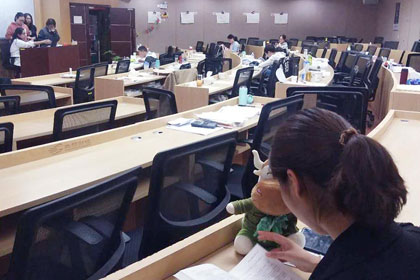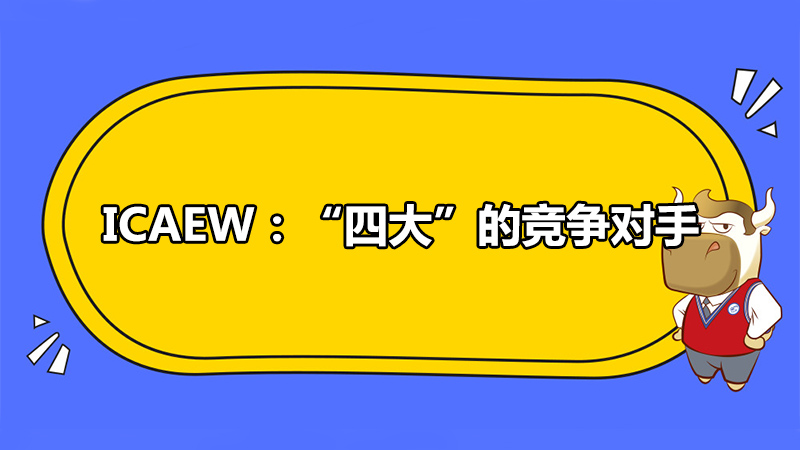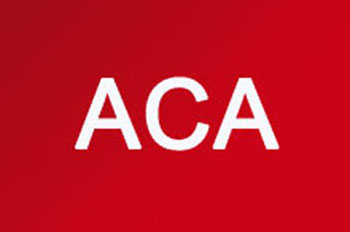广西的ACA考生请留意:Assurance-Specification grid
来源:
高顿网校
2014-09-29
对于想更了解财经相关知识及ACA的广西学员们,高顿网校小编与您随时分享ACA知识。
ACA:Assurance-Specification grid
ACA:Assurance-Specification grid
This grid shows the relative weightings of subjects within this module and should guide the relative study time spent on each. Over time the marks available in the assessment will equate to the weightings below, while slight variations may occur in individual assessments to enable suitably rigorous questions to be set.
| Weighting (%) | |
| 1 The concept, process and need for assurance | 20 |
| 2 Internal controls | 25 |
| 3 Gathering evidence on an assurance engagement | 35 |
| 4 Professional ethics | 20 |
| 100 |
The following learning outcomes should be read in conjunction with the Assurance and Audit and Ethics Standards tables in Appendix 1.
1 The concept, process and need for assurance
Candidates will be able to explain the concept of assurance, why assurance is required and the reasons for assurance engagements being carried out by appropriately qualified professionals.
In the assessment, candidates may be required to:
a. define the concept of assurance
b. state why users desire assurance reports and provide examples of the benefits gained from them
c. compare the functions and responsibilities of the different parties involved in an assurance engagement
d. compare the purposes and characteristics of, and levels of assurance obtained from, different assurance engagements
e. identify the issues which can lead to gaps between the outcomes delivered by the assurance engagement and the expectations of users of the assurance reports, and suggest how these can be overcome
f. define the assurance process, including:
- obtaining the engagement
- continuous risk assessment
- engagement acceptance
- the scope of the engagement
- planning the engagement
- performing the engagement
- obtaining evidence
- evaluation of results of assurance work
- concluding and reporting on the engagement
- reporting to the engaging party
- keeping records of the work performed
g. recognise the need to plan and perform assurance engagements with an attitude of professional scepticism
h. define the concept of reasonable assurance.
2 Internal controls
Candidates will be able to explain the nature of internal controls and why they are important, document an organisation’s internal controls and identify weaknesses in internal control systems.
a. state the reasons for organisations having effective systems of control
b. identify the fundamental principles of effective control systems
c. identify the main areas of a business that need effective control systems
d. identify the components of internal control in both manual and IT environments, including:
- the overall control environment
- preventative and detective controls
- internal audit
e. define and classify different types of internal control, with particular emphasis upon those which impact upon the quality of financial information
f. show how specified internal controls mitigate risk and state their limitations
g. identify internal controls for an organisation in a given scenario
h. identify internal control weaknesses in a given scenario
i. identify, for a specified organisation, the sources of information which will enable a sufficient record to be made of accounting or other systems and internal controls.
3 Gathering evidence on an assurance engagement
Candidates will be able to select sufficient and appropriate methods of obtaining assurance evidence and recognise when conclusions can be drawn from evidence obtained or where issues need to be referred to a senior colleague.
In the assessment, candidates may be required to:
a. state the reasons for preparing and keeping documentation relating to an assurance engagement
b. identify and compare the different methods of obtaining evidence from the use of tests of control and substantive procedures, including analytical procedures
c. recognise the strengths and weaknesses of the different methods of obtaining evidence
d. identify the situations within which the different methods of obtaining evidence should and should not be used
e. compare the reliability of different types of assurance evidence
f. select appropriate methods of obtaining evidence from tests of control and from substantive procedures for a given business scenario
g. recognise when the quantity and quality of evidence gathered from various tests and procedures is of a sufficient and appropriate level to draw reasonable conclusions on which to base a report
h. identify the circumstances in which written confirmation of representations from management should be sought and the reliability of such confirmation as a form of assurance evidence
i. recognise issues arising whilst gathering assurance evidence that should be referred to a senior colleague.
4 Professional ethics
Candidates will be able to understand the importance of ethical behaviour to a professional and identify issues relating to integrity, objectivity, professional competence and due care, confidentiality, professional behaviour and independence.
In the assessment, candidates may be required to:
a. state the role of ethical codes and their importance to the profession
b. recognise the differences between a rules based ethical code and one based upon a set of principles
c. recognise how the principles of professional behaviour protect the public and fellow professionals
d. identify the key features of the system of professional ethics adopted by IFAC and ICAEW
e. identify the fundamental principles underlying the IFAC and the ICAEW code of ethics
f. recognise the importance of integrity and objectivity to professional accountants, identifying situations that may impair or threaten integrity and objectivity
g. suggest courses of action to resolve ethical conflicts relating to integrity and objectivity
h. respond appropriately to the request of an employer to undertake work outside the confines of an individual’s expertise or experience
i. recognise the importance of confidentiality and identify the sources of risks of accidental disclosure of information
j. identify steps to prevent the accidental disclosure of information
k. identify situations in which confidential information may be disclosed
l. define independence and recognise why those undertaking an assurance engagement are required to be independent of their clients
m. identify the following threats to the fundamental ethical principles and the independence of assurance providers:
- self-interest threat
- self-review threat
- management threat
- advocacy threat
- familiarity threat
- intimidation threat
n. identify safeguards to eliminate or reduce threats to the fundamental ethical principles and the independence of assurance providers
o. suggest how a conflict of loyalty between the duty a professional accountant has to their employer and the duty to their profession could be resolved.

扫一扫微信,*9时间获取ACA考试报名时间和考试时间提醒
高顿网校特别提醒:已经报名2014年ACA考试的考生可按照复习计划有效进行!另外,高顿网校ACA课程即将推出,通过针对性地讲解、训练、答疑、模考,对学习过程进行全程跟踪、分析、指导,可以帮助考生全面提升备考效果。
报考指南: 2014年ACA考试报考指南
考前冲刺:ACA考试经验分享 考试辅导
报考指南: 2014年ACA考试报考指南
考前冲刺:ACA考试经验分享 考试辅导
版权声明:本条内容自发布之日起,有效期为一个月。凡本网站注明“来源高顿教育”或“来源高顿网校”或“来源高顿”的所有作品,均为本网站合法拥有版权的作品,未经本网站授权,任何媒体、网站、个人不得转载、链接、转帖或以其他方式使用。
经本网站合法授权的,应在授权范围内使用,且使用时必须注明“来源高顿教育”或“来源高顿网校”或“来源高顿”,并不得对作品中出现的“高顿”字样进行删减、替换等。违反上述声明者,本网站将依法追究其法律责任。
本网站的部分资料转载自互联网,均尽力标明作者和出处。本网站转载的目的在于传递更多信息,并不意味着赞同其观点或证实其描述,本网站不对其真实性负责。
如您认为本网站刊载作品涉及版权等问题,请与本网站联系(邮箱fawu@gaodun.com,电话:021-31587497),本网站核实确认后会尽快予以处理。
严选名师 全流程服务
其他人还搜了
热门推荐
-
ACA与ACCA的比较 2021-05-24
-
英国皇家会计师aca与acca究竟考哪个好? 2021-04-28
-
英国特许会计师有多厉害? 2021-04-21
-
ACA考试需要多少时间?此文帮你分析 2021-04-02
-
aca考试和acca考试究竟考哪个好? 2021-03-05
-
2021aca考试内容有哪些?考试形式是怎样的? 2020-12-29
-
ACA考试用什么计算机型号? 2020-12-07
-
这里是ACA和CPA区别信息,小伙伴们快来看! 2020-11-26
-
ACA考试内容有哪些?工作经验要求是怎样的? 2020-11-23
-
ACA证书含金量有多高? 2020-11-20
-
ACA和CMA有什么区别?究竟考哪个好? 2020-11-18
-
ACA考试题型及考试方式,一文介绍 2020-11-13
-
大学期间为什么要考ACA证书? 2020-11-10
-
ACA考试常见问题大汇总,一文带你了解! 2020-11-05
-
考前必看的ACA考试注意事项 2020-10-27
-
考前必看的ACA考试注意事项 2020-10-27
-
cfa和aca考哪个好? 2020-09-07
-
考英国皇家特许会计师有哪些优势? 2020-08-28
-
英国皇家注册会计师好考吗 2020-08-19
-
aca和acca的区别到底是怎样的? 2020-08-07
-
aca考试很难吗? 2020-08-06
-
学英国皇家特许会计师ACA考试有用吗? 2020-07-27
-
ICAEW:“四大”的中国竞争对手 2020-05-27
-
aca认证在中国有用吗? 2020-04-17
-
为什么很多财会人在考ACA证书? 2020-04-14
-
ACA会计好考吗,考出来有什么用? 2020-04-09
-
aca证书有用吗,含金量如何? 2020-03-27
-
详解:ACA考试的免试政策有哪些? 2020-03-25
-
aca证书好考吗? 2020-03-24
-
ACA和ACCA所存在的区别,详细分析 2019-12-05
 高顿项目
高顿项目






























